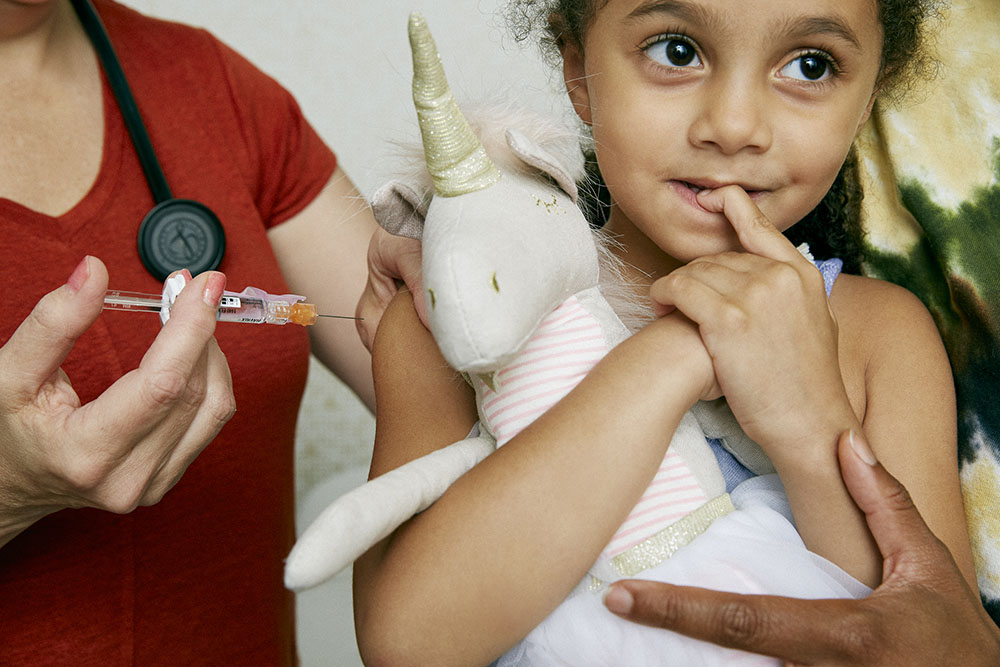By Stephanie Wasserman, MSPH
Executive Director, Immunize Colorado
The COVID-19 pandemic, which has caused over 2.6 million cases around the world and is growing each day, has shown us—in the most alarming way—the indisputable value of vaccines. And though we are at least a year away from having an effective COVID-19 vaccine, we do need to remember that we already have many available vaccines that are safe and highly effective against dozens of dangerous and sometimes deadly diseases that once ran rampant across the globe. Most of us have never seen the ravages of polio or measles, but these diseases can come roaring back if we do not stay vigilant about maintaining high vaccination rates.
But the shelter-in-place orders, while keeping families at home and safe from the coronavirus, are also having an inadvertent adverse effect on routine immunization rates as many parents have canceled well-child visits out of fear. A recent New York Times article showed according to one data source that compared to pre-coronavirus rates, “measles, mumps and rubella shots dropped by 50 percent; diphtheria and whooping cough shots by 42 percent; and HPV vaccines by 73 percent.” In Colorado, public health officials have seen a marked decline in shots given and a reduction in vaccine orders through the federal Vaccines for Children program.
These alarming trends are even more concerning when considering that many states and localities were already struggling to meet herd immunity levels prior to the pandemic, and that vaccine-preventable disease outbreaks were occurring with increasing frequency across the U.S. The CDC noted in a study released this past February that one-third of children between 19 and 35 months didn’t receive vaccines on time. The Global Alliance for Vaccines and Immunisation (Gavi) now predicts that globally, 13 million people will miss out on life-saving vaccinations due to disruption caused by the coronavirus pandemic.
Dr. Peter Hotez, dean of the National School of Tropical Medicine at Baylor College of Medicine in Houston Texas, warns us against a possible coming syndemic, which is the aggregation of two or more epidemics. For example, in the fall of 2020 when flu season returns, if the population is not adequately immunized against influenza, we could be facing a flu and COVID-19 epidemic at the same time—which could dangerously overwhelm our health care systems.
Maintaining routine immunization during the pandemic is critical especially for children age 24 months or younger, pregnant women, seniors and people with chronic diseases. Many major health professional organizations such as the American Academy of Pediatrics, the American Academy of Family Physicians and World Health Organization have issued interim guidelines for maintaining immunizations (see below). The guidelines include strategies for providing safe care with strict infection control practices in place such as offering sick care during different hours than well care, adopting tele-health screenings protocols, removing wait times and implementing masking and social distancing practices.
Across the country, practices have begun implementing these strategies to mitigate risk to patients. A local county health department in Wisconsin is conducting patient education and screening over the phone prior to vaccination appointments, and then re-routing patient traffic so that people wait in their cars until called inside for a swift, no-wait time visit. A North Dakota pediatric clinic implemented a new practice where staff first conduct a virtual visit to screen and educate patients about recommended vaccines, then provide a quick in-person appointment immediately after at a designated clinic with specific entrances, hours and exam rooms. Many health care providers have also implemented innovative approaches to health care delivery such as drive thru clinics. The state health department in Tennessee is providing curbside immunization clinics by first screening patients over the phone and then administering vaccines to patients in their cars. These are just a few examples of the important precautions being implemented at practices and clinics all across the country.
To help protect patients and ensure routine vaccination continues, many healthcare professional organizations have issued interim guidelines for providers to observe during the pandemic. Below is a snapshot of some recent updates.
- Maintaining Childhood Immunizations During COVID-19 Pandemic | CDC
- Immunization Schedule Changes During the COVID-19 Pandemic | CDC
- Maintaining Adult Immunizations During COVID-19 Pandemic | CDC
- Guiding principles for immunization activities during the COVID-19 pandemic | World Health Organization (WHO)
- COVID-19 Clinical Guidance Q&A | American Academy of Pediatrics, Colorado Chapter
- COVID-19: Guidance for Family Physicians on Preventive and Non-Urgent Care | American Academy of Family Physicians
Immunization coalitions across the U.S. have also developed COVID-19 resource hubs that include pertinent guideline documents, messaging tools, and other resources with regular updates added daily. Below is a snapshot of some of these coalitions’ resources.
Maintaining routine immunization during the pandemic is not only important for public health but it is critical for ensuring we do not overrun our already battered healthcare system and the economy with the burden and cost of additional, avoidable disease outbreaks.

